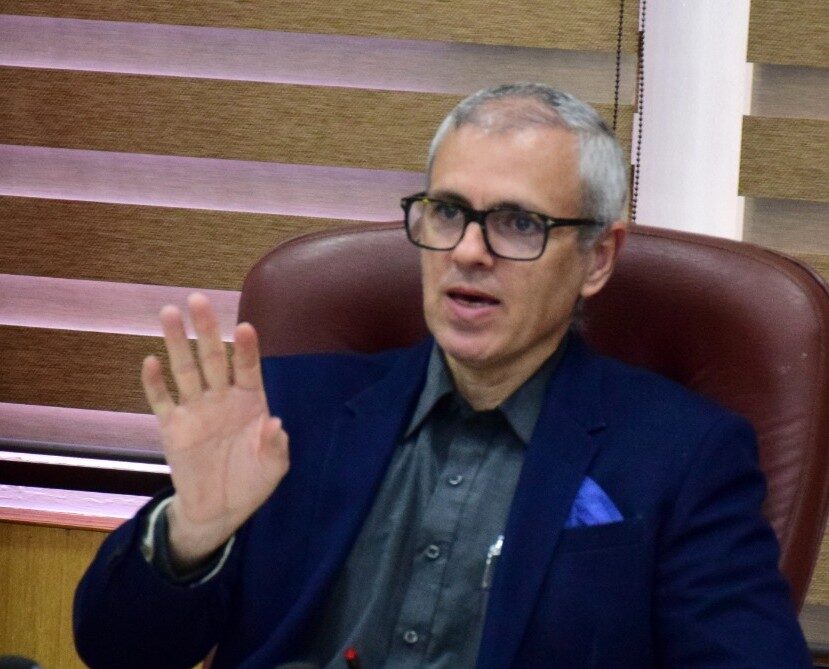Srinagar: India’s highways are being digitized in line with global technological advancements. Authorities are persistent in reforming the National Highways Authority of India (NHAI) from planning to tolls, with a keen focus of turning them physical and data-driven assets.
Take the example of FASTag, wherein the process has lately transformed toll collection in India, reaching about 98% penetration with over 8 crore users in the country. According to the national railway estimates, India’s road network covers over 63 lakh kilometres, as of March 2025, the second largest in the world.
In the past decade, the National Highway network has grown up from 91,287 kms in 2013–14, to to 1,46204 kms which is significant growth of 60%. Between 2014 and 2025, 54,917 kms of new highways were added. To manage this large network, the government has now implemented a digital system covering all the major stages of highway projects.
Defining India’s Highways
Consider the National Payments Corporation of India (NPCI), which was developed by the National Electronic Toll Collection (NETC) program, a unified platform for electronic toll payments.
At its centre is FASTag, (One Tag, All Roads) an RFID-based device placed on a vehicle’s windscreen. It enables automatic toll payment from a linked account without stopping. One tag can be used at any toll booth in India. With a 98% usage rate and over 8 crore users, FASTag has made tolling faster and more transparent.
For non-commercial vehicles, the pass allows unlimited travel for one year or 200 toll crossings with a one-time payment of INR 3,000. It is valid at 1,150 toll plazas on National Highways and Expressways and can be activated within two hours via the Rajmargyatra app or NHAI website. It removes the need for frequent recharges.
Within two months of its launch on 15 August 2025, the pass reached 25 lakh users with 5.67 crore transactions. The figures are considerable and significant.
From 15 November 2025, under the revised National Highways Fee Rules, 2008, cash users will pay double the toll, and UPI users will pay 1.25 times the fee.
In August 2025, India launched its first Multi-Lane Free Flow (MLFF) tolling system at Choryasi Fee Plaza on NH-48 in Gujarat. Using cameras and RFID, it reads FASTags and vehicle numbers in motion, allowing toll collection without barriers. This reduces congestion, saves fuel, and lowers emissions.
The government also launched Rajmargyatra, a mobile app that provides details about highways, toll plazas, fuel stations, hospitals, EV charging points, and live weather updates.
The app has over 15 lakh downloads, a 4.5-star rating, and ranks 23rd overall and 2nd in travel on the Google Play Store. It became the top-performing government app four days after adding the FASTag Annual Pass feature.
Digital Backbone for Highways
NHAI One App integrates five areas from Field Staff Attendance, Highway Maintenance, Road Safety Audits, Toilet Maintenance, and to Construction Audits into one platform. It allows “officers, contractors, and supervisors” to manage and track activities in real time.
Highway planning now uses the GIS-based PM Gati Shakti National Master Plan (NMP), which hosts over 550 data layers such as “logistics hubs, social infrastructure, and environment data”.
The entire 1.46 lakh km National Highway network has been uploaded to this portal, marking a shift from paper-based to geo-intelligent planning.
The next step is Intelligent Transport Systems (ITS), mainly through the Advanced Traffic Management System (ATMS). It detects incidents quickly, reduces accidents, and improves emergency response. ATMS operates on expressways like Delhi–Meerut, Trans-Haryana, and Eastern Peripheral and is now standard in new highway projects. On the Bengaluru–Mysore Expressway, road deaths dropped sharply after ATMS installation in July 2024.
To improve safety and transparency, Project Information Sign Boards display QR codes linking to project details, helplines, and nearby facilities. Network Survey Vehicles (NSVs) with 3D lasers and 360 degree cameras are being used across 23 states to inspect 20,933 km of roads and detect defects automatically.
Under the Green Highways Mission (2015), NHAI planted 56 lakh saplings in 2023–24 and 67.47 lakh in 2024–25 to reduce pollution, prevent soil erosion, and create jobs.
Through Mission Amrit Sarovar (2022), NHAI developed 467 water bodies, conserving 2.4 crore cubic meters of water and supplying soil for construction, saving about INR 16,690 crore. In 2023–24, NHAI used 631 lakh metric tonnes of recycled materials such as fly ash, plastic waste, and reused asphalt for highway building, supporting eco-friendly construction.
Undoubtedly, India’s highway mission has spread from connecting cities to connecting systems—linking people, data, and decisions through digital and sustainable infrastructure. With GIS-based planning, intelligent traffic systems, digital tolling, and citizen apps, the highway network is deemed to become smarter, safer, and structurally efficient.
Courtesy: PIB Srinagar






